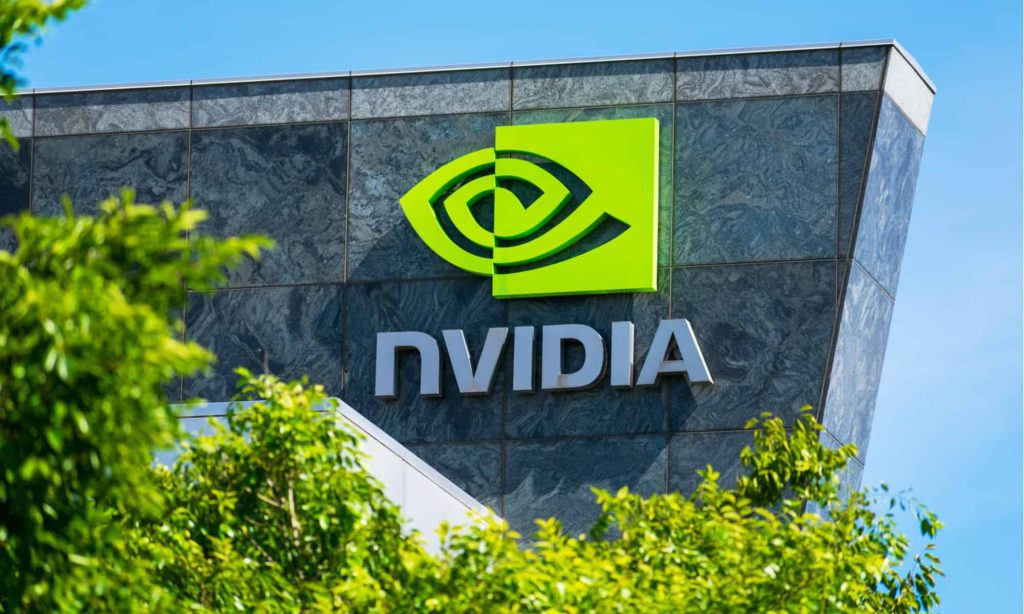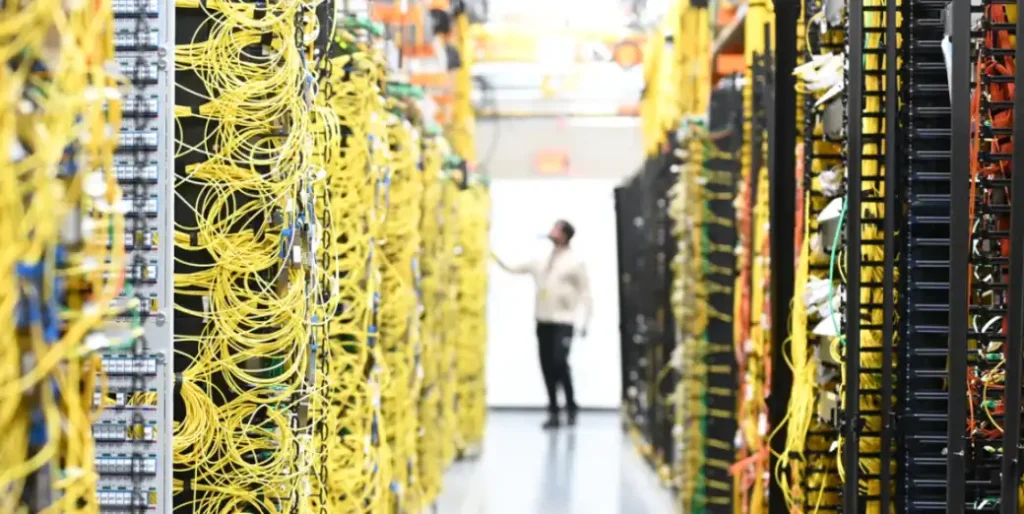The semiconductor industry—often referred to as the “brains” behind modern technology—is rapidly becoming the battleground for geopolitical and technological supremacy. From smartphones and electric vehicles to supercomputers and artificial intelligence, semiconductors power nearly every piece of cutting-edge hardware. In recent years, the race to dominate this sector has intensified, with countries ramping up investments, forming strategic alliances, and safeguarding supply chains.
At the center of this fierce global contest is Nvidia, a company that started as a niche graphics card manufacturer but has grown into a trillion-dollar titan, now synonymous with the future of AI and accelerated computing. As the semiconductor landscape shifts, Nvidia’s role has evolved from a major industry player to a driving force shaping not just markets but policy and innovation strategies across the globe.
Semiconductors: The New Oil of the Digital Economy
Semiconductors, or microchips, are essential to modern life. These tiny integrated circuits act as the processing cores of nearly all electronic devices—from consumer electronics to military-grade hardware. With the rise of artificial intelligence, data centers, autonomous vehicles, and advanced robotics, the demand for high-performance chips has exploded.
This demand has placed the semiconductor industry at the heart of a global economic and security race. The U.S., China, South Korea, Japan, and the European Union are all making aggressive moves to secure chip manufacturing, design capabilities, and supply chain independence. The result is a high-stakes, multibillion-dollar race to control the future of computing.
Nvidia: From Graphics Pioneer to AI Powerhouse
Founded in 1993 by Jensen Huang, Nvidia was initially focused on creating graphics processing units (GPUs) for gaming. While its early products revolutionized visual computing, the company’s true inflection point came when it recognized the potential of GPUs for parallel computing—specifically, their ability to process massive amounts of data simultaneously.
This realization positioned Nvidia at the forefront of the AI revolution. Today, Nvidia’s chips power the vast majority of machine learning models, from chatbots like ChatGPT to autonomous vehicle navigation systems. Its H100 and A100 chips have become industry benchmarks for training and deploying large-scale AI systems.
Unlike traditional CPUs made by companies like Intel or AMD, Nvidia’s GPUs are optimized for handling the complex matrix computations required by artificial intelligence and high-performance computing. This distinction has given the company a massive edge in sectors ranging from data centers and cloud infrastructure to healthcare and defense.
AI Boom and Nvidia’s Explosive Growth
The explosion in generative AI technologies in 2023 and 2024 led to surging demand for Nvidia’s hardware. Tech giants such as Microsoft, Amazon, Google, and Meta rushed to build out AI infrastructure, each purchasing vast quantities of Nvidia chips to train and deploy AI models.
In 2023 alone, Nvidia’s revenue surged over 200%, propelling the company’s valuation past the $1 trillion mark—putting it in league with Apple, Microsoft, and Amazon. This rise made CEO Jensen Huang one of the wealthiest figures in tech while cementing Nvidia’s position as a critical enabler of the AI economy.
The company’s importance became even clearer as shortages of its high-end chips began to limit the speed at which firms could develop AI tools. Essentially, Nvidia’s products became the oil fueling the AI engine.
The Global Semiconductor Arms Race
As Nvidia scales new heights, the broader semiconductor race is accelerating. The U.S. government, recognizing the strategic importance of chips, passed the CHIPS and Science Act, allocating over $50 billion to bolster domestic semiconductor production. The move is intended to reduce reliance on East Asia—particularly Taiwan and South Korea—which currently dominate chip manufacturing.
Meanwhile, China has launched its own multi-year initiatives to become self-sufficient in advanced chip production. However, it has faced major roadblocks due to U.S. export restrictions, especially targeting AI-focused chips like Nvidia’s H100, which are now banned from being sold to Chinese firms. This restriction has further elevated Nvidia’s strategic value to the West, positioning the company as a linchpin in the U.S. effort to retain technological supremacy.
Europe, too, is investing heavily to localize chip production, with Germany and the Netherlands playing key roles through companies like ASML, the only firm capable of producing extreme ultraviolet (EUV) lithography machines required to make the most advanced chips.
Nvidia’s Expanding Ecosystem
Beyond hardware, Nvidia is building an expansive ecosystem. Its CUDA software platform allows developers to write applications optimized for Nvidia GPUs, creating a sticky developer environment and increasing dependency on its products.
The company is also branching into new territory:
-
Nvidia Omniverse: A platform for creating virtual simulations and industrial digital twins.
-
Nvidia DRIVE: An autonomous vehicle platform used by companies like Mercedes-Benz and Hyundai.
-
DGX Cloud: A cloud-based AI supercomputing service offered in collaboration with Microsoft Azure, Google Cloud, and Oracle.
These platforms enable Nvidia to move up the value chain—from just making chips to owning the full AI development pipeline.
Challenges and Competitors on the Horizon
Despite its dominance, Nvidia faces growing competition. AMD and Intel are stepping up their GPU and AI chip offerings, while custom chips from companies like Google (TPUs) and Amazon (Inferentia) are gaining ground in specific cloud-based workloads.
Startups such as Cerebras, Graphcore, and Groq are also developing niche AI accelerators designed to outperform Nvidia in select use cases. Meanwhile, regulatory scrutiny over potential monopolistic practices could prompt governments to examine Nvidia’s market power more closely.
However, Nvidia’s entrenched developer base, first-mover advantage, and deep partnerships across the AI ecosystem give it a formidable lead that will be difficult to dislodge in the short term.
Geopolitical Impact: Semiconductors as Instruments of Power
Nvidia’s ascent is not just a business success story—it also has geopolitical implications. In the current era, chip dominance translates to national power. As nations race to secure access to advanced AI infrastructure, companies like Nvidia become critical national assets.
The U.S. government’s collaboration with Nvidia exemplifies this intersection of public and private interests. Whether it’s enforcing chip export bans to China or subsidizing AI supercomputing centers, governments are actively shaping the competitive landscape in ways that elevate Nvidia’s importance.
Conversely, the lack of access to Nvidia chips is seen as a major disadvantage in regions like China, where firms are scrambling to find alternatives or develop homegrown solutions.
Looking Ahead: Can Nvidia Sustain Its Lead?
As artificial intelligence continues to expand into new industries—from healthcare and finance to entertainment and education—Nvidia’s influence will likely grow in tandem. The company’s aggressive investment in R&D, its ever-expanding product portfolio, and its grip on the AI software ecosystem position it well for long-term dominance.
Yet, it will have to continuously innovate, diversify supply chains, and manage regulatory risks to maintain its competitive edge. The next wave of breakthroughs in quantum computing, edge AI, and neuromorphic chips could reshape the field again—and Nvidia will need to adapt quickly to stay ahead.
Conclusion
The global semiconductor race is more than just a contest of engineering—it’s a competition that will define economic leadership and technological sovereignty for decades. Nvidia, with its unmatched role in powering AI innovation, stands at the center of this transformative moment.
As countries realign their policies and industries race to build next-gen infrastructure, one thing is clear: the road to AI dominance runs through Nvidia’s silicon.












